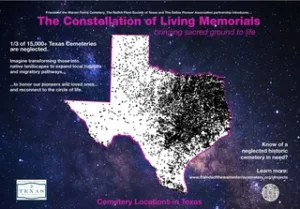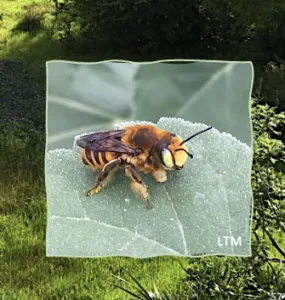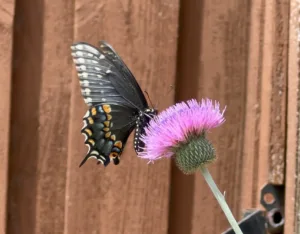Stay in touch with the Dallas Chapter – sign up for our Newsletter, check out our Facebook page for more details and information. Additionally, lots of great information can be found in our Newsletter Archives.
NPSOT Dallas February 17 Meeting, 6:30pm Social Time, 7:00pm meeting begins.
The Dallas County Parks and Open Space Program’s Role in Local Conservation
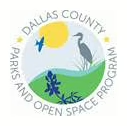
The Dallas County Parks and Open Space Program has 21 nature preserves on over 4,000 acres of public land. Learn how the program works with partners and volunteers across Dallas County to conserve critical natural habitat, protect rivers, streams, and floodplains, and provide opportunities for people to connect with nature in the highly urbanized DFW Metroplex.
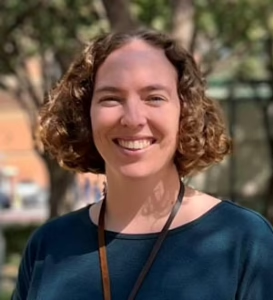 Mia Whitham, CPRP, has served as the Administrator for the Dallas County Parks and Open Space Program since 2021. Mia collaborates with 13 municipal partners and one special district on the management of 18 of the preserves and she oversees over 1,300 acres across three preserves in the County’s unincorporated area. She led the recently completed 2024 Dallas County Open Space Plan, the first master plan for the Program in over 30 years. Mia is focused on enhancing preserve amenities, conditions, and access as well as supporting the County’s valued management partners. Mia holds a Bachelor of Science in Foresty (B.S.F.) Degree from Stephen F. Austin State University and a Master of Science (M.S.) Degree in Biology from the University of Texas at Arlington. She started her career as a park ranger and worked in regional planning prior to her role at Dallas County.
Mia Whitham, CPRP, has served as the Administrator for the Dallas County Parks and Open Space Program since 2021. Mia collaborates with 13 municipal partners and one special district on the management of 18 of the preserves and she oversees over 1,300 acres across three preserves in the County’s unincorporated area. She led the recently completed 2024 Dallas County Open Space Plan, the first master plan for the Program in over 30 years. Mia is focused on enhancing preserve amenities, conditions, and access as well as supporting the County’s valued management partners. Mia holds a Bachelor of Science in Foresty (B.S.F.) Degree from Stephen F. Austin State University and a Master of Science (M.S.) Degree in Biology from the University of Texas at Arlington. She started her career as a park ranger and worked in regional planning prior to her role at Dallas County.
ZOOM LINK: https://us02web.zoom.us/j/83725236133?pwd=MnRoZlRWMEd4ZENkaXdjalpkRFFIdz09
If needed, use: Meeting ID: 837 2523 6133 Passcode: 882399a*
It’s time to start potting up plants for the SPRING PLANT SALE on May 3, 2025!
 After this cold snap, your plants will start emerging with the warm weather.
After this cold snap, your plants will start emerging with the warm weather.
Here are our Guidelines for Donating Plants or becoming a Plant Sale Provider
• ALL plants need to be 100% Texas Native plants.
• SEED PROPAGATING should begin in January for the May sale, so plants are full and healthy, ready to put in the ground.
• Begin NOW to decide which plants to divide.
• Many will be “volunteers” that have shown up in your yard, dig and repot before April 6th.
• Plants in 4″ pots need to be full and healthy.
• Plants in quart and gallon pots need to have fully rooted and have good upper growth.
• Plants need to have had at least 3 weeks to recover from being divided, and have been watered every 1-3 days, as needed.
• Use soil that is 1/3 perlite or compost.
• Blooming plants sell best.
• Finish dividing the plants no later than April 6 (this will allow the plant to recover),
• ID potted plants with common and scientific name.
• Please drop off your plants at the Bath House the morning of May 3rd. More details will follow.
• For specific details on seed propagation, how to divide or take cuttings of your plants see our Plant Propagation Guide.
• Ask yourself: Is this a potted Plant I would want to buy?
We prefer to have multiples of species, rather than one or two of this and that. BUT, if it’s a usually hard to find plant, we’d still love to have it!
• Questions: Contact – Cindy McInturff or Emily Black, npsot.dallas@gmail.com.
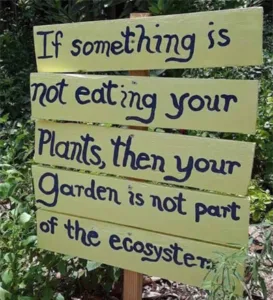
Dallas Chapter’s January meeting: Monday, January 20, 2025
Meetings are held the 3rd Monday of each month. All meetings are open to members and the public.
Join us starting at 6:30 for social time, chapter announcements and presentations start at 7:00pm
more Meeting and Location info
Can’t make it in person? ZOOM our monthly meetings at: https://us02web.zoom.us/j/83725236133?pwd=MnRoZlRWMEd4ZENkaXdjalpkRFFIdz09
If needed, use: Meeting ID: 837 2523 6133 Passcode: 882399a*
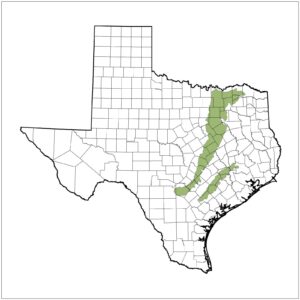
The Blackland Prairie
The Dallas Chapter of NPSOT includes all of Dallas County and the twenty-two cities within its boundaries.
We are in the Blackland Prairie Ecoregion: Average rainfall 28-40 inches with peak rainfall usually in May, Hardiness Zone 8A, average annual minimum temps 15-10 degrees.
Wildflower Planting dates for our area are:
Spring – January 15th thru March 1st
Fall – October 1st thru December 1st
Check this link for a PDF of the USDA’s Hardiness Zone Map for Texas: https://ftp.dot.state.tx.us/pub/txdot-info/library/pubs/cit/hardiness_district.pdf.
Our area is predominately an urban landscape, and the Dallas Chapter’s primary goal is to educate homeowners, businesses, and municipalities on the benefit of planting native landscapes. Each meeting, newsletter, field trip and activity will strive to achieve this goal.
Plant Propagation Guide – A basic guide to sharing your native plants with others through plant propagation. (PDF, 1.33 MB)
Inviting Nature Back Home – A complete guide to updating your landscape for Birds, Bees and Butterflies. (PDF, 2 MB)
see more planting info on our Plant Info page


